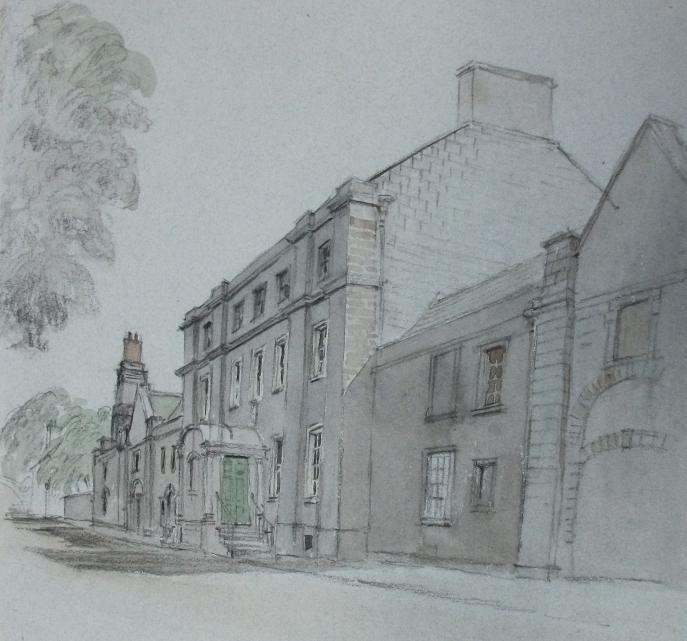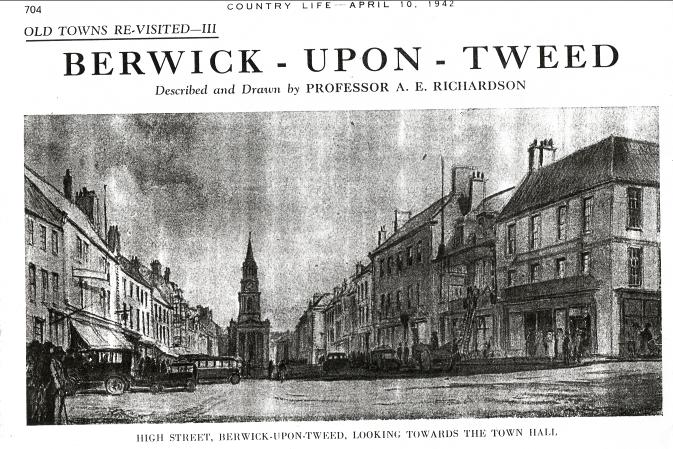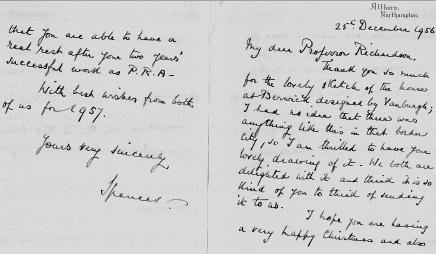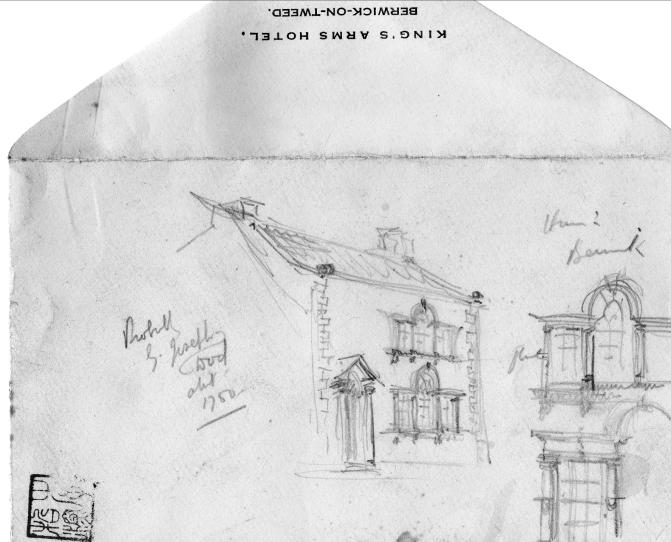|
Sir Albert Richardson and Mr Knox’s Antique shop |

|
Bridge Street was the setting for the following amusing anecdote recounted by Simon Houfe in his biographical memoir of his grandfather the architect Sir Albert Richardson 1880—1964 , “The Professor.
“Another robust piece of strategy was brought into play when we were on a northern tour. There were a pair of faience figures in the drawing-room at Avenue House which had belonged to Pierpont Morgan and of which grandfather was passionately fond. Stopping at Berwick-upon-Tweed, we went to visit Mr Knox's antique shop, a regular calling place. From across the street we could see in the window another pair of faience figures from the same set as the ones at Ampthill. We all saw them at exactly the same time; my grandfather, my mother and I bolted across the street in a fairly disorderly stampede and threw ourselves at Mr Knox's little door. My grandfather was very stout and with the number of overcoats and waistcoats that he usually wore, very solid indeed. The door did not give way but we became wedged in the tiny entrance each shouting el saw them first!' knowing full well that Knox was good and cheap. My grandfather held up his gigantic umbrella to bar our entry while he wrenched open the door handle and pounced on the faience figures. It was quite good humoured, but it was bulk that had the prior claim, not seniority as he afterwards tried to tell us!”
|




|
Sketch of the Governor’s House by Sir Albert Richardson and correspondence with Earl Spencer. |

|
Sir Albert Richardson served for 2 years during the 1950’s as President of the Royal Academy during which time he was a staunch opponent of “modern art” and architecture. At the time he was looked upon as something of a joke, a man who refused to move with the times, but now he is being re-evaluated and is appreciated for his adherence to traditional values. His work as an architect has been celebrated by a major exhibition in 1999 AT London’s Heinz Gallery, and his Financial Times Building became the first post war building to be listed.
Sir Albert was a lover of Berwick who did much to celebrate the town including a major article in Country Life magazine in 1942. After the war he was instrumental in preventing the proposed demolition of Berwick’s Town Hall and he was the architect for its restoration at a time of post war austerity. He conducted the Queen and Prince Philip around the newly restored building, and I am told by his grandson and biographer Simon Houfe who as a young boy was present, that the Queen took a great interest in the graffiti in the cells prompting Prince Philip to remark “What are you two up to in there” when she was closeted behind the closed door with her guide.
Sir Albert was rewarded by being made an Honorary Freeman of the town, although he maintained that the right was his by virtue of an ancestor who held that rank and lived in Castle Terrace during the late 19th century. It is a pity that a man who so loved Berwick and rose to the very peak of his profession as an Architect and Artist is not even mentioned in accounts of artists who are associated with the town, but the wheel of fortune is turning and one day he will be recognised for his true worth. When he is perhaps this little sketch of a house in Church Street, that he did on the back of a Kings Arms envelope will pay for my retirement |
|
When he visited Berwick Sir Albert always stayed at the Kings Arms requesting the room with picture the of the Berwick Smack. |